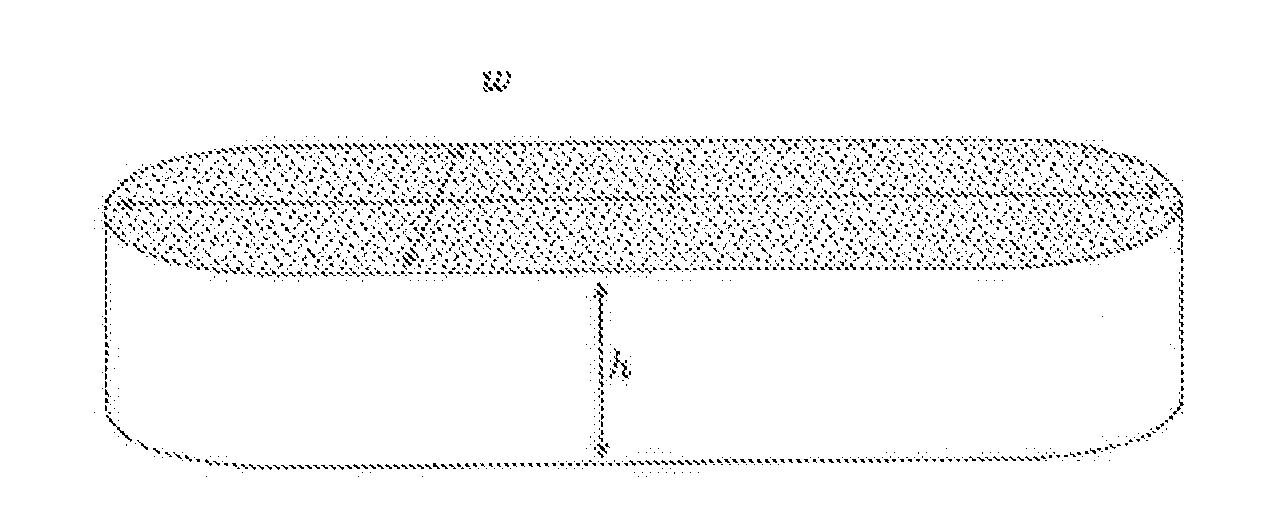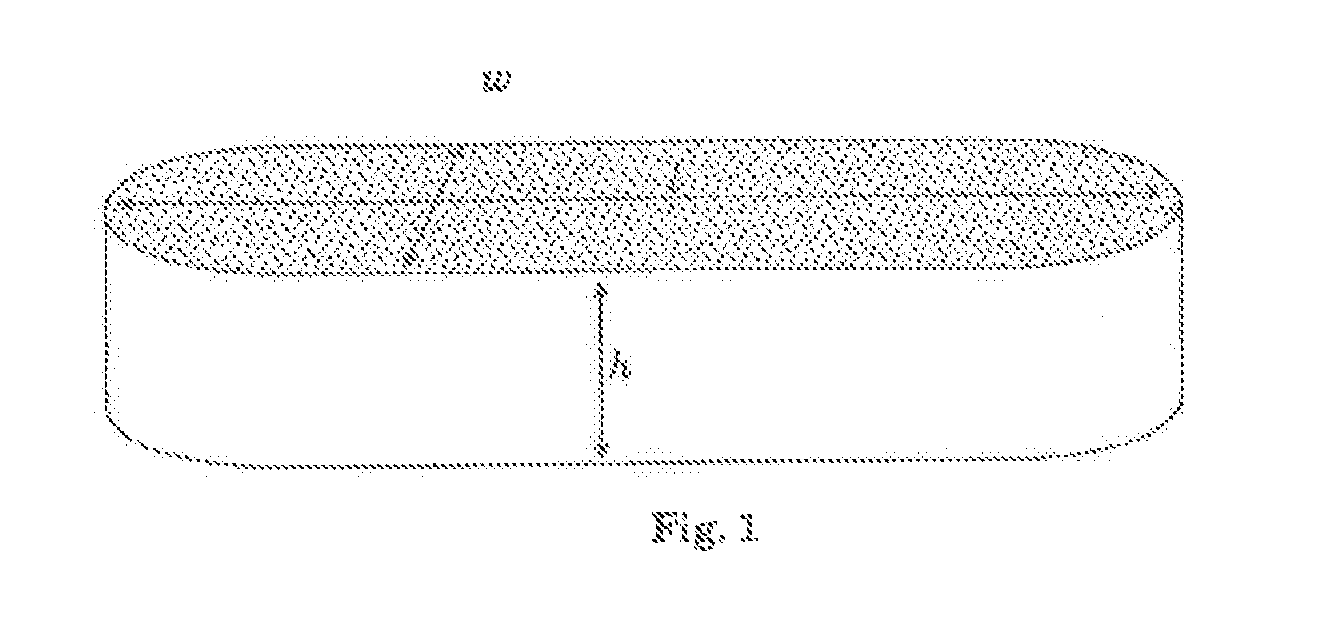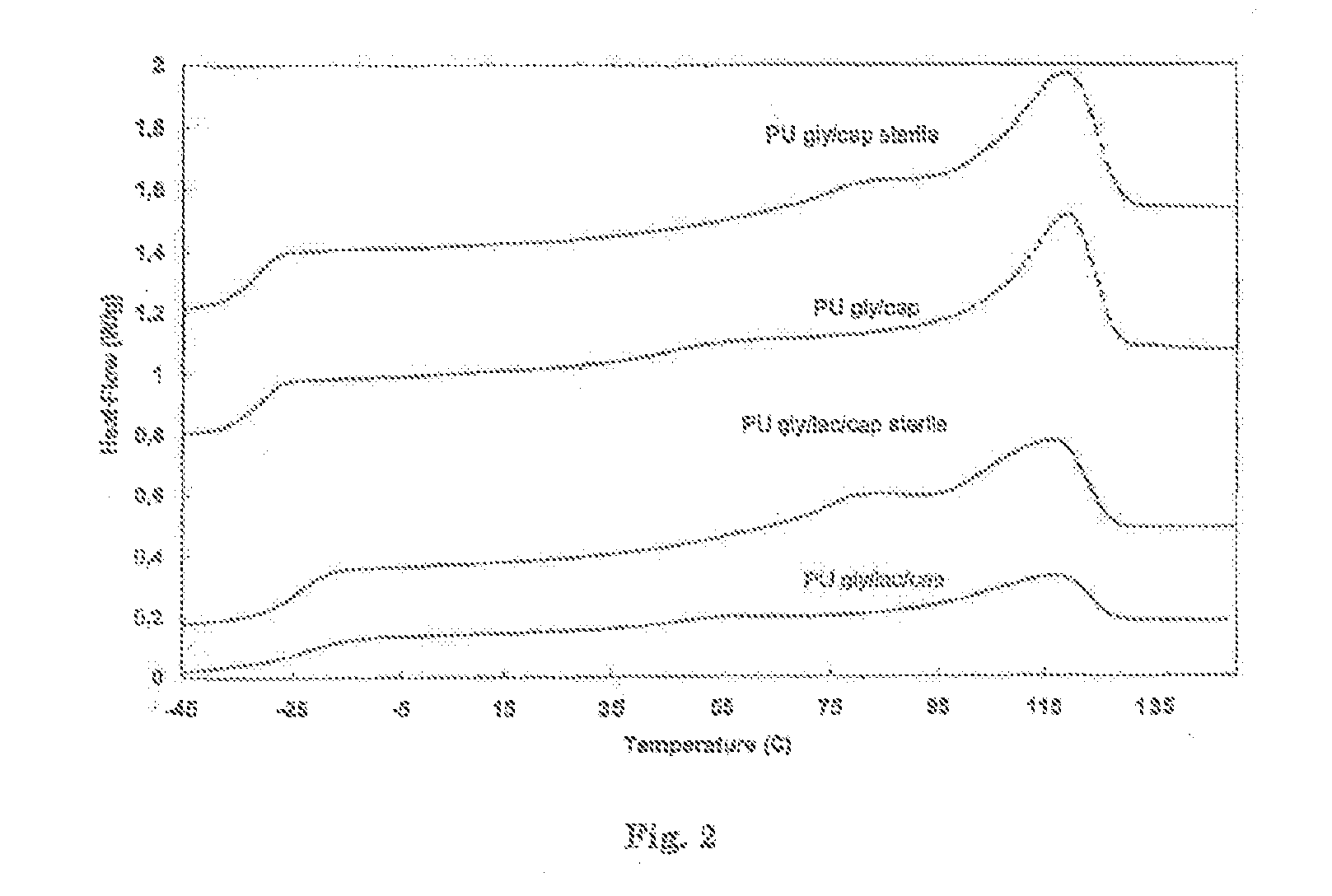Biomedical foams
a foam and biodegradable technology, applied in the field of biodegradable porous absorbent materials, can solve the problems of affecting so as to improve the comfort of patients, reduce the incidence of complications, and improve the effect of mechanical properties
- Summary
- Abstract
- Description
- Claims
- Application Information
AI Technical Summary
Benefits of technology
Problems solved by technology
Method used
Image
Examples
example 1
(50 / 50) Glycolide-ε-Caprolactone Pre-Polymer (Mn=2000)
[0139]The pre-polymer was synthesized by ring opening polymerization of ε-caprolactone and glycolide in a 50 / 50 (mol / mol) ratio using 1,4-butanediol as initiator and stannous octoate as catalyst (M / I=10000). After reaction at 130° C. for 6 days, 1H-NMR shows complete monomer conversion. Thermal analysis shows a completely amorphous pre-polymer with a glass transition temperature between −40 and −35° C.
example 2
(50 / 50 Glycolide-ε-Caprolactone) Pre-Polymer Initiated with PEG1000 (Mn=2000)
[0140]The pre-polymer was synthesized by ring opening polymerization of ε-caprolactone and glycolide in a 50 / 50 (mol / mol) ratio using polyethyleneglycol (PEG) with a molecular weight of 1000 as initiator and stannous octoate as catalyst (M / I=10000). PEG is dried under vacuum at 50° C. during at least 8 hours, where after the monomers and catalyst are added. The mixture is reacted at 140° C. for 6 days, 1H-NMR shows complete monomer conversion. Thermal analysis shows a semi-crystalline pre-polymer with a glass transition temperature between −50° C. and −40° C., a crystallisation peak between −10° C. and 0° C. and a melting peak of the PEG segment of 15-20° C.
example 3
(20 / 40 / 40) Lactide-Glycolide-ε-Caprolactone Pre-Polymer (Mn=2000)
[0141]The pre-polymer was synthesized according to the method of example 1 by ring opening polymerization of ε-caprolactone, glycolide and lactide in a 40 / 40 / 20 (mol / mo / mol) ratio using 1,4-butanediol as initiator and stannous octoate as catalyst (M / I=10000). Thermal analysis shows a completely amorphous pre-polymer with a glass transition temperature between −22° C. and −23° C.
PUM
| Property | Measurement | Unit |
|---|---|---|
| porosity | aaaaa | aaaaa |
| fragmentation time | aaaaa | aaaaa |
| hydrophilic | aaaaa | aaaaa |
Abstract
Description
Claims
Application Information
 Login to View More
Login to View More - R&D
- Intellectual Property
- Life Sciences
- Materials
- Tech Scout
- Unparalleled Data Quality
- Higher Quality Content
- 60% Fewer Hallucinations
Browse by: Latest US Patents, China's latest patents, Technical Efficacy Thesaurus, Application Domain, Technology Topic, Popular Technical Reports.
© 2025 PatSnap. All rights reserved.Legal|Privacy policy|Modern Slavery Act Transparency Statement|Sitemap|About US| Contact US: help@patsnap.com



